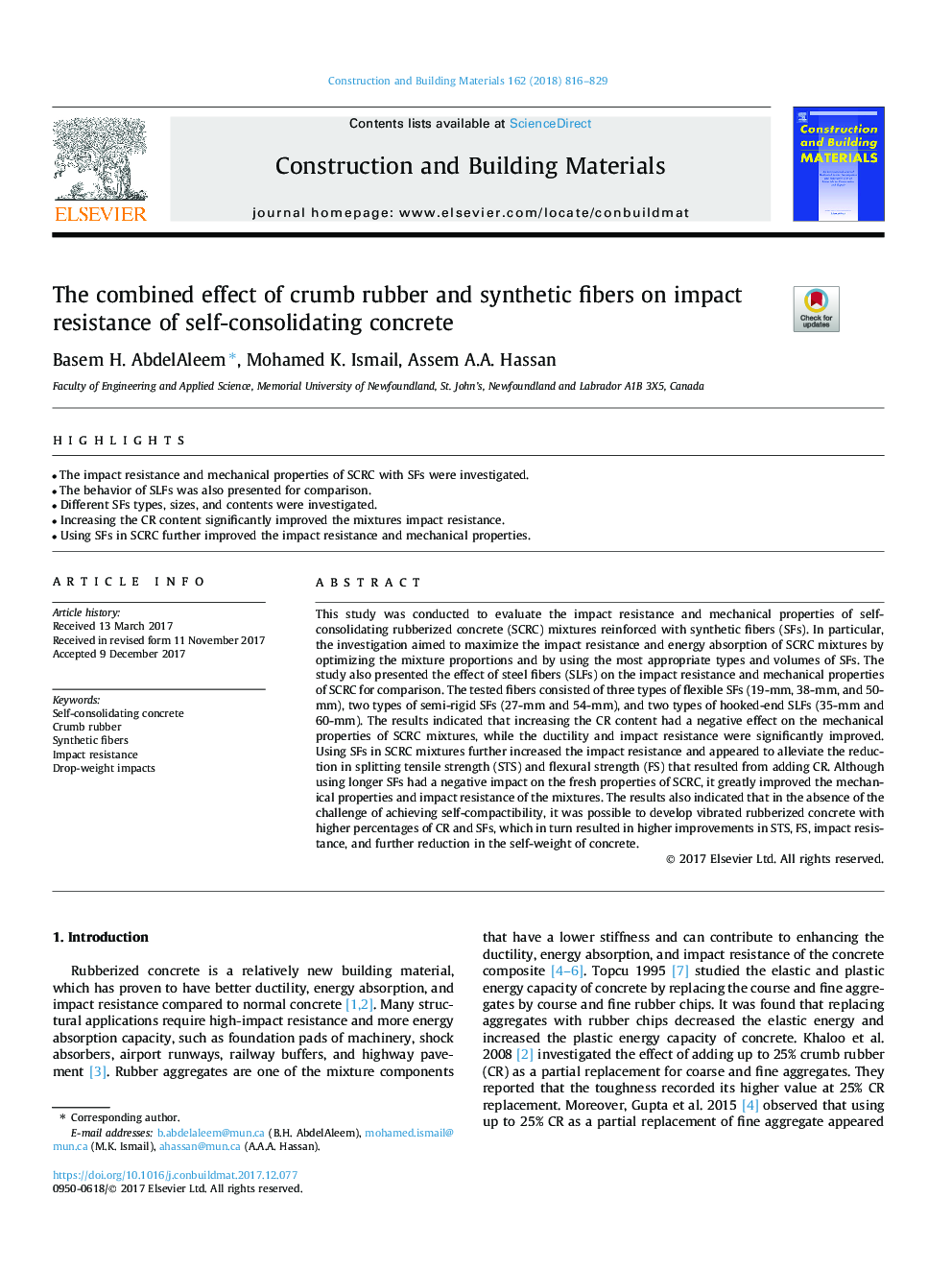| Article ID | Journal | Published Year | Pages | File Type |
|---|---|---|---|---|
| 6716647 | Construction and Building Materials | 2018 | 14 Pages |
Abstract
This study was conducted to evaluate the impact resistance and mechanical properties of self-consolidating rubberized concrete (SCRC) mixtures reinforced with synthetic fibers (SFs). In particular, the investigation aimed to maximize the impact resistance and energy absorption of SCRC mixtures by optimizing the mixture proportions and by using the most appropriate types and volumes of SFs. The study also presented the effect of steel fibers (SLFs) on the impact resistance and mechanical properties of SCRC for comparison. The tested fibers consisted of three types of flexible SFs (19-mm, 38-mm, and 50-mm), two types of semi-rigid SFs (27-mm and 54-mm), and two types of hooked-end SLFs (35-mm and 60-mm). The results indicated that increasing the CR content had a negative effect on the mechanical properties of SCRC mixtures, while the ductility and impact resistance were significantly improved. Using SFs in SCRC mixtures further increased the impact resistance and appeared to alleviate the reduction in splitting tensile strength (STS) and flexural strength (FS) that resulted from adding CR. Although using longer SFs had a negative impact on the fresh properties of SCRC, it greatly improved the mechanical properties and impact resistance of the mixtures. The results also indicated that in the absence of the challenge of achieving self-compactibility, it was possible to develop vibrated rubberized concrete with higher percentages of CR and SFs, which in turn resulted in higher improvements in STS, FS, impact resistance, and further reduction in the self-weight of concrete.
Related Topics
Physical Sciences and Engineering
Engineering
Civil and Structural Engineering
Authors
Basem H. AbdelAleem, Mohamed K. Ismail, Assem A.A. Hassan,
